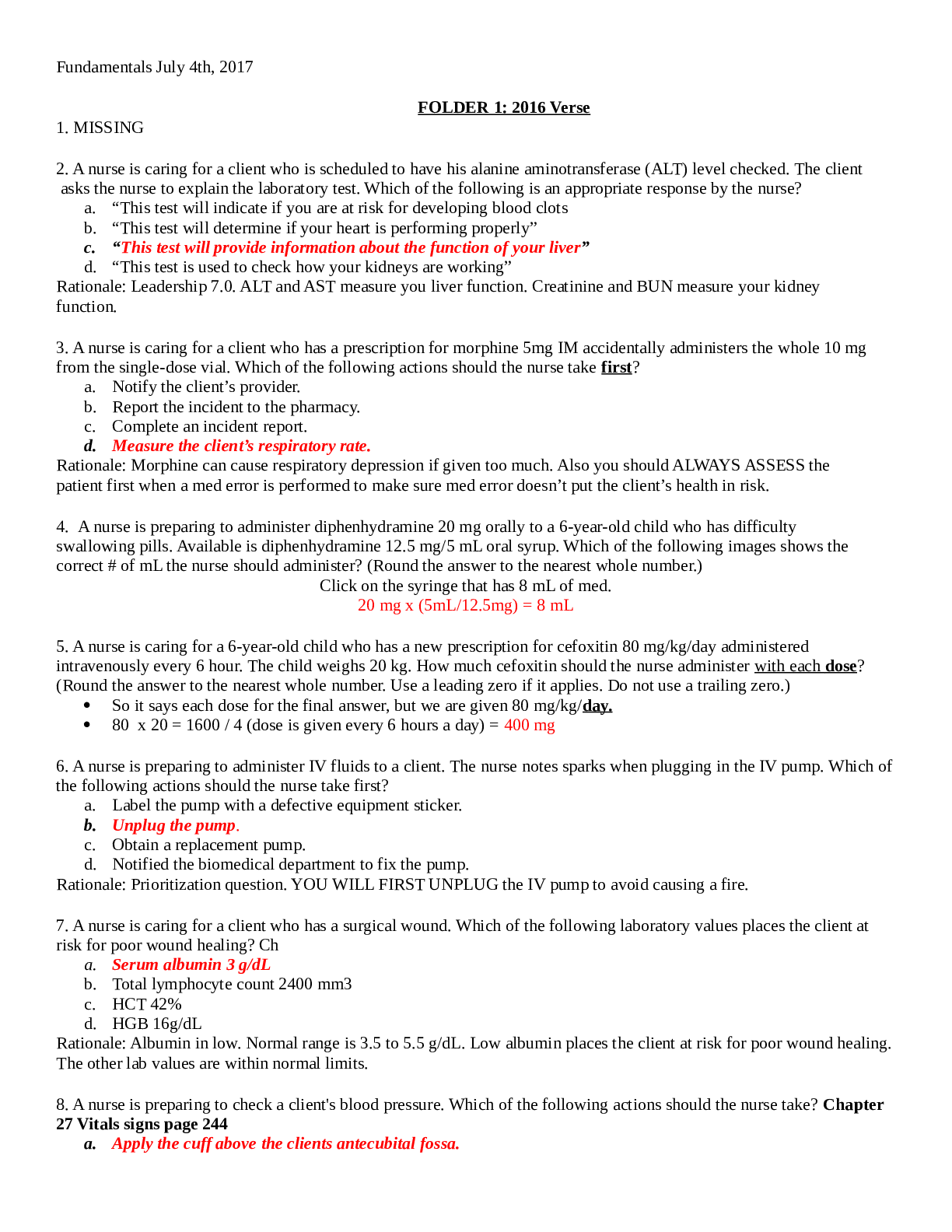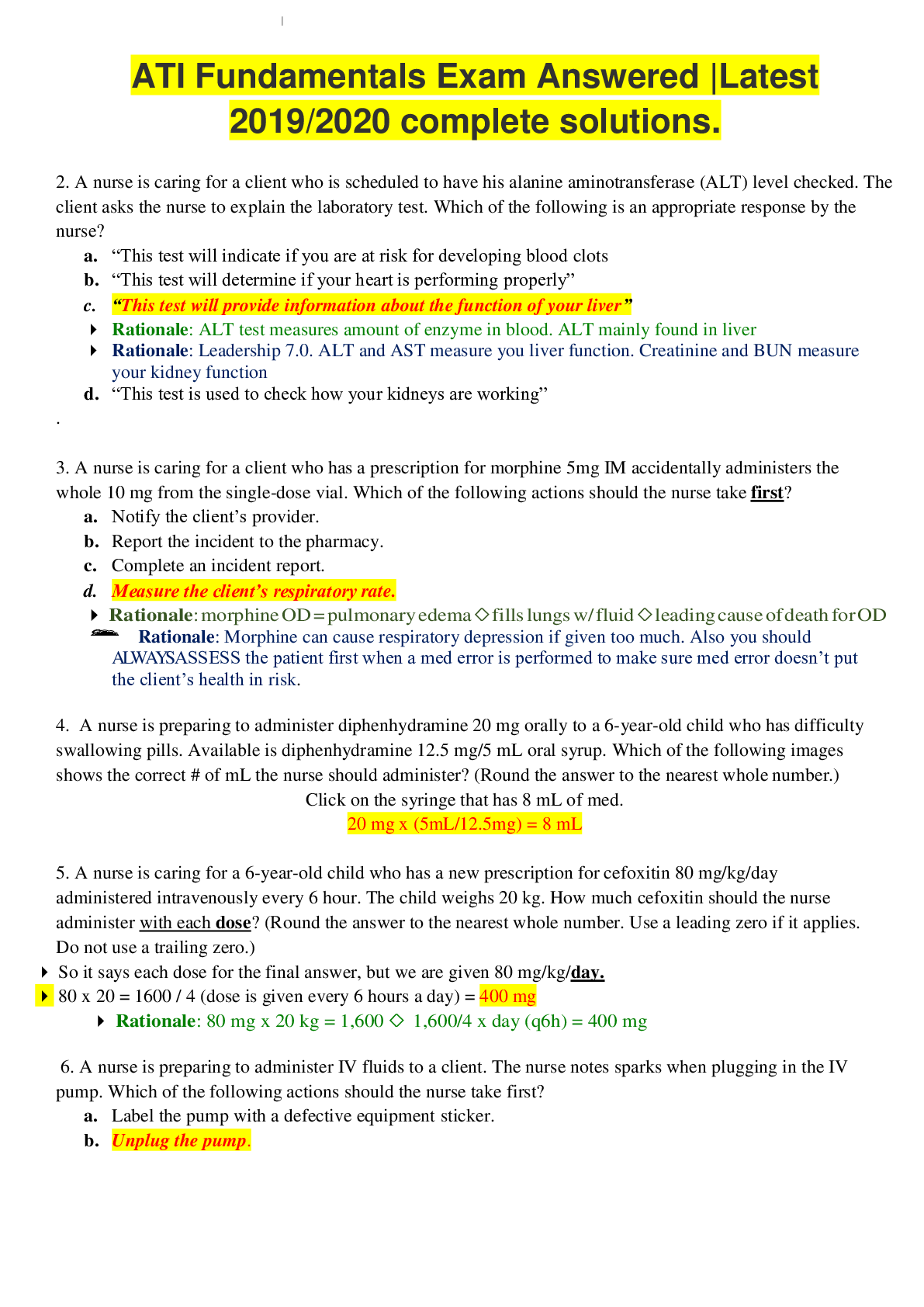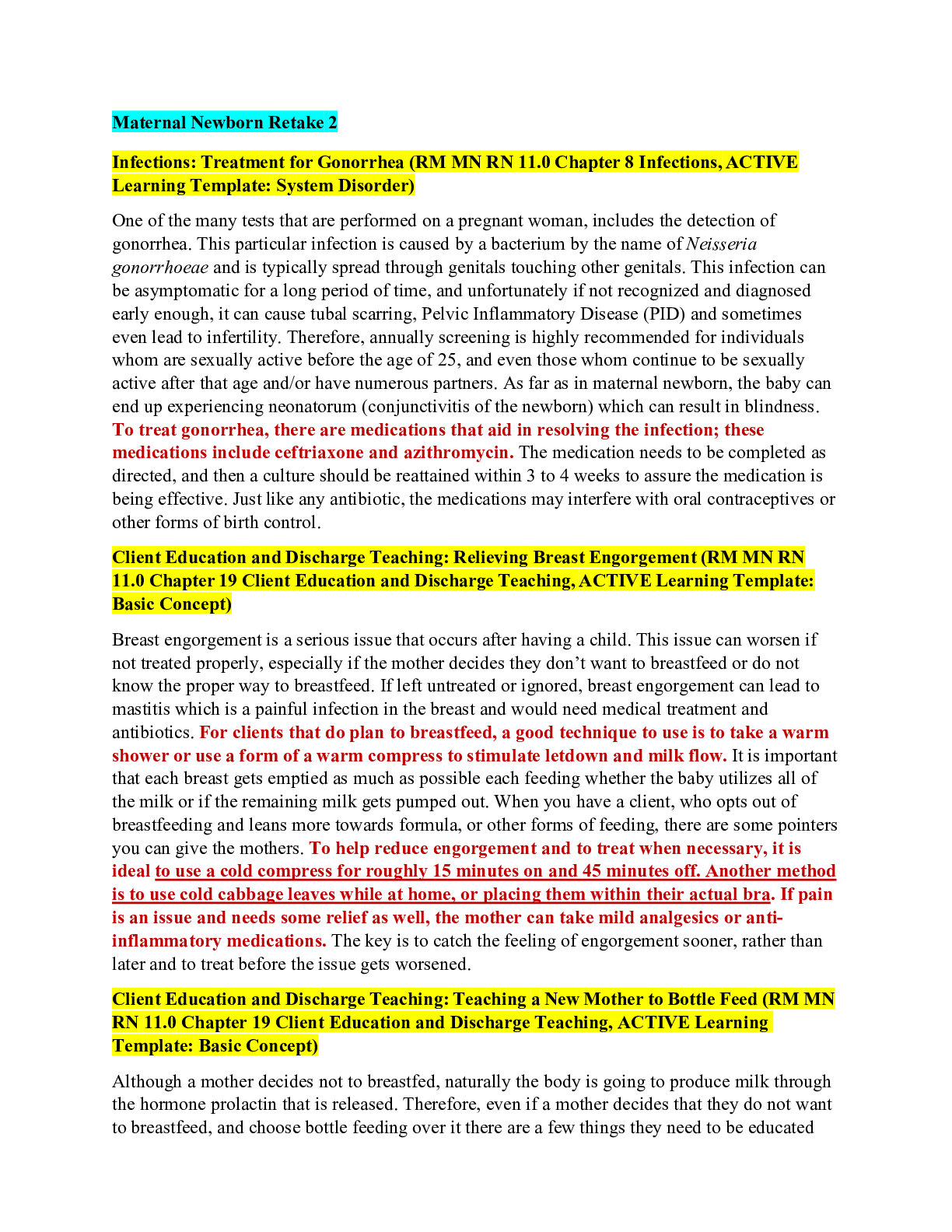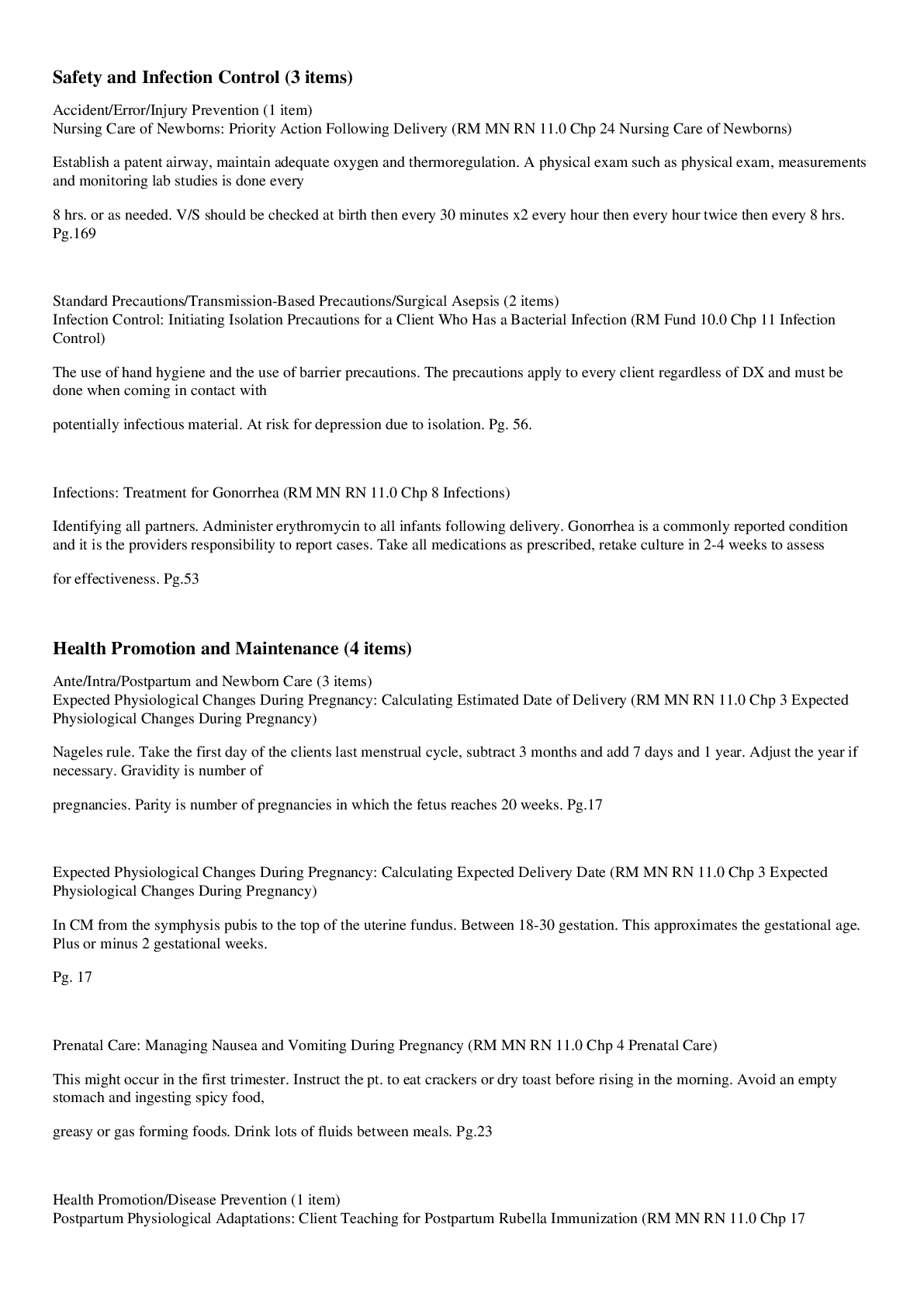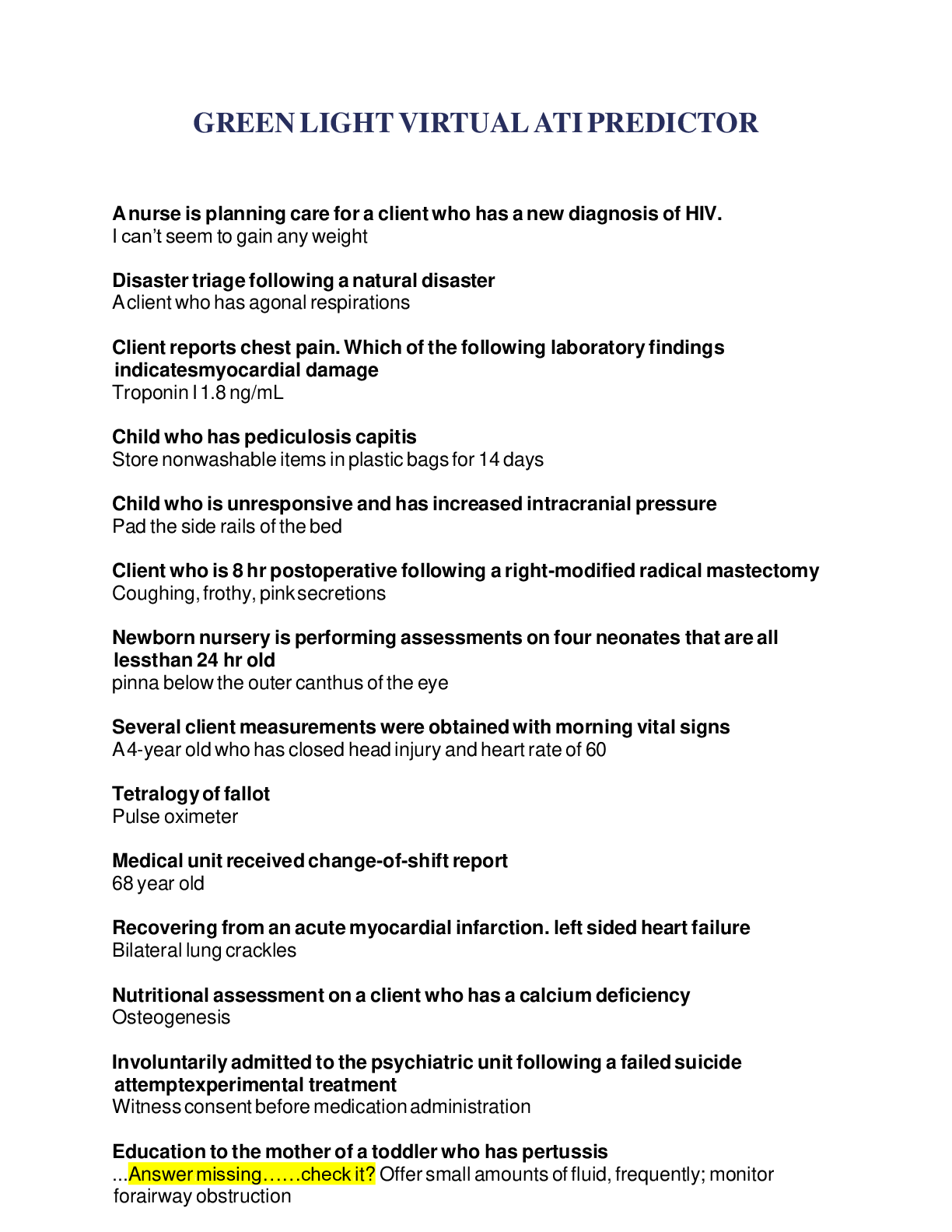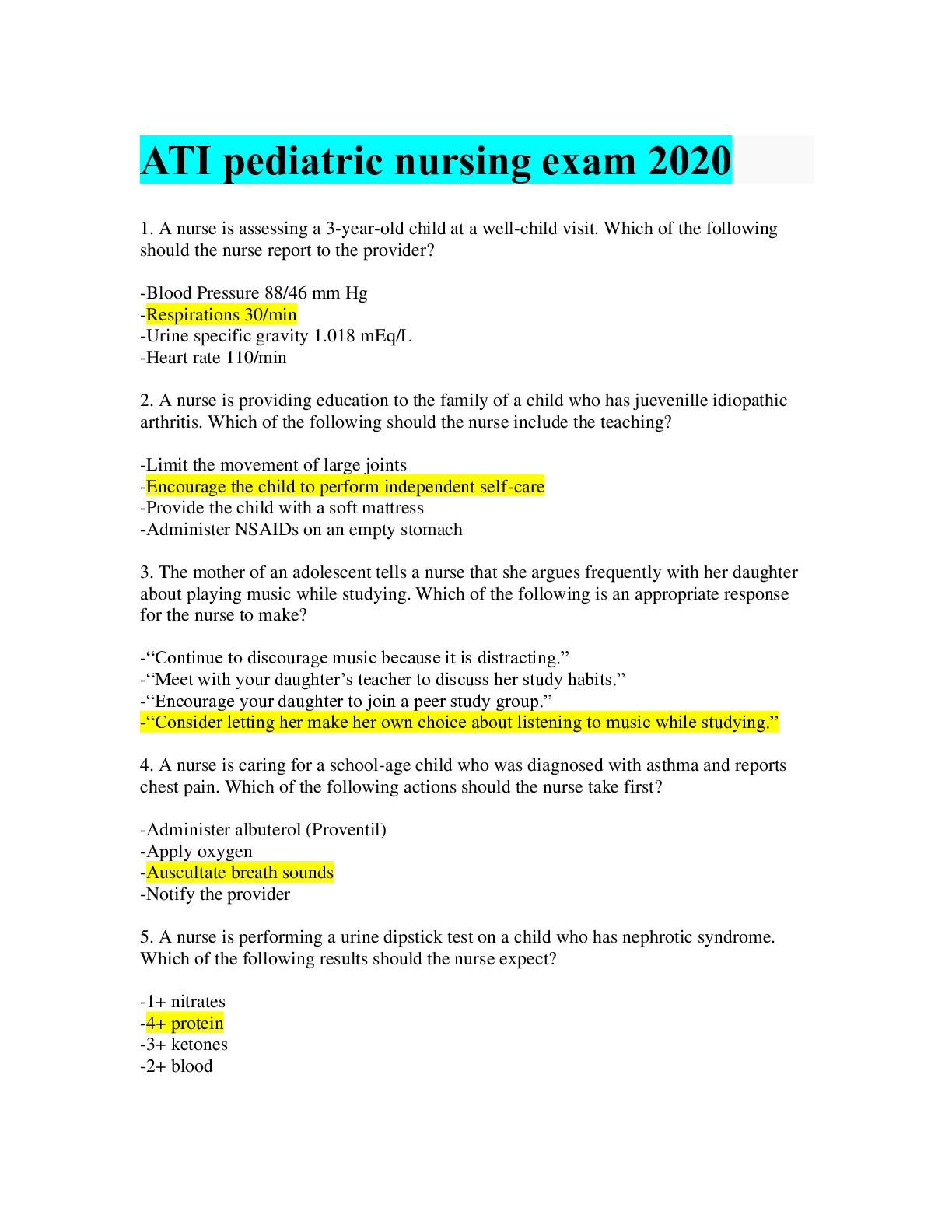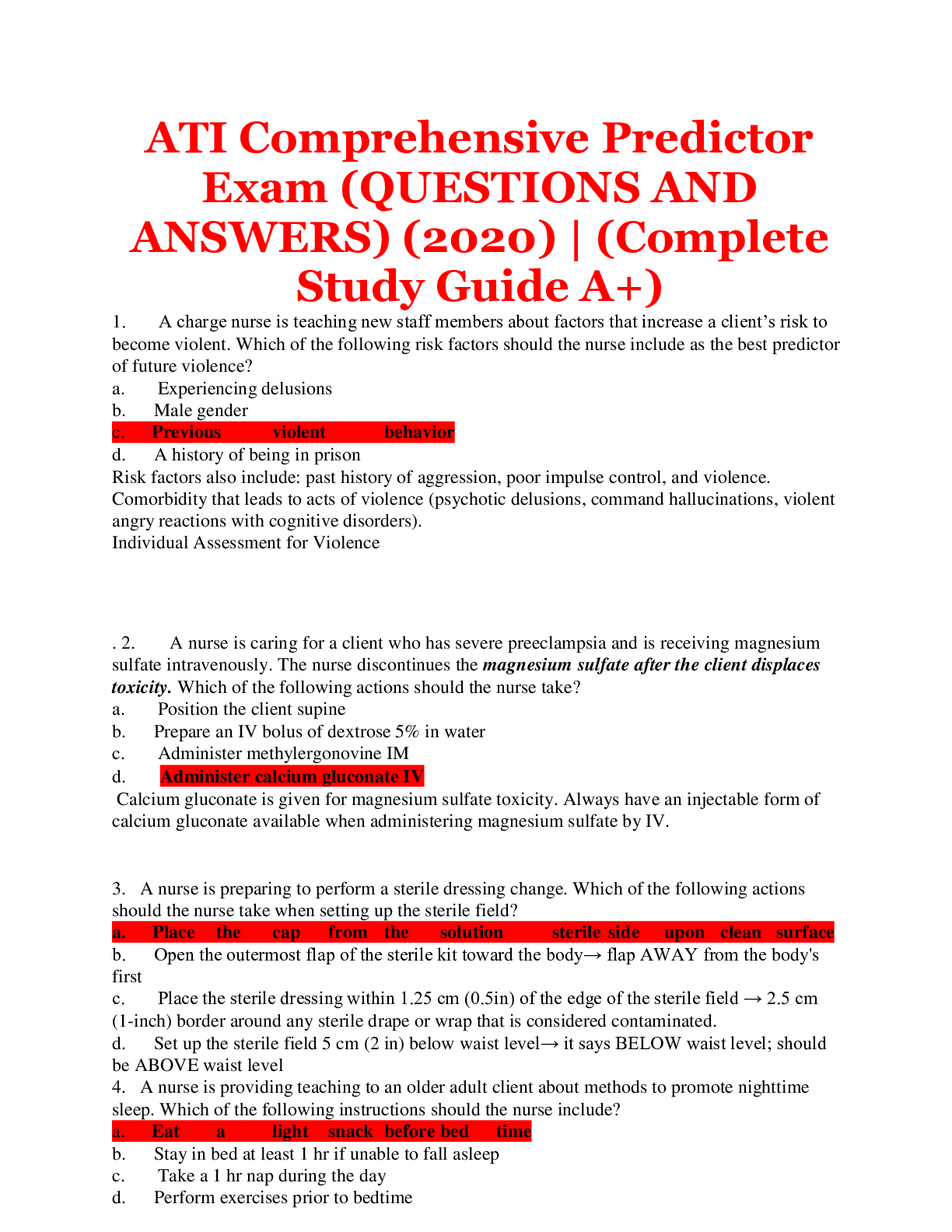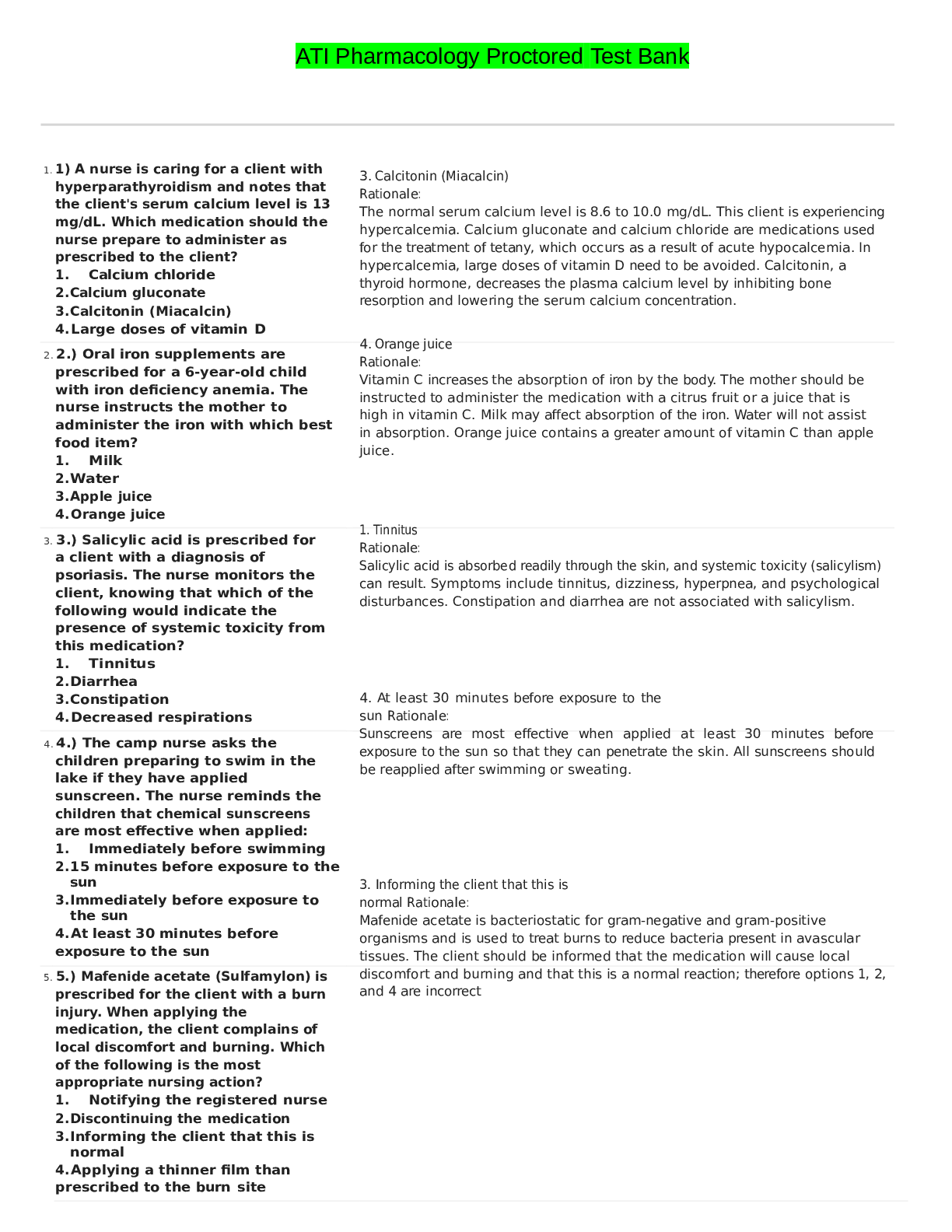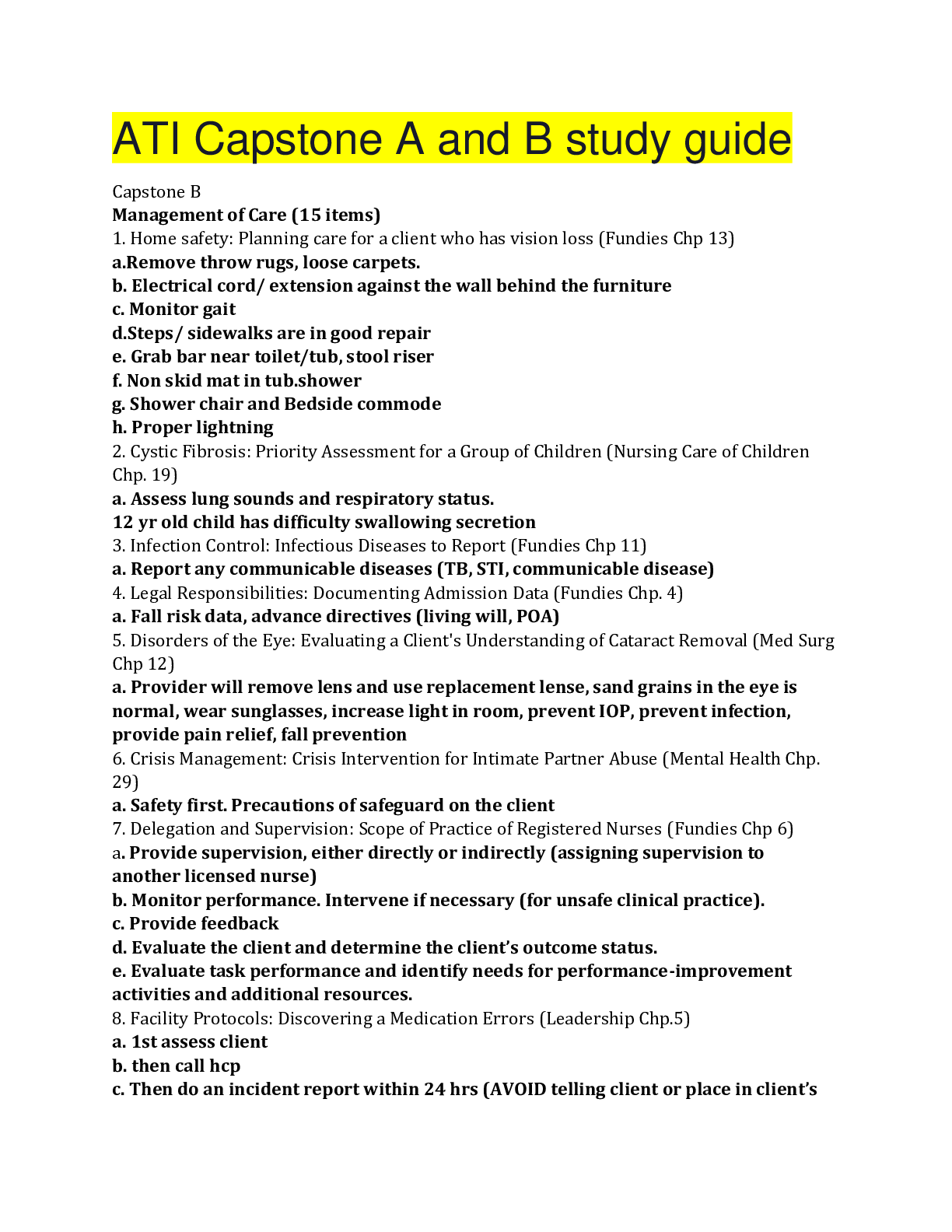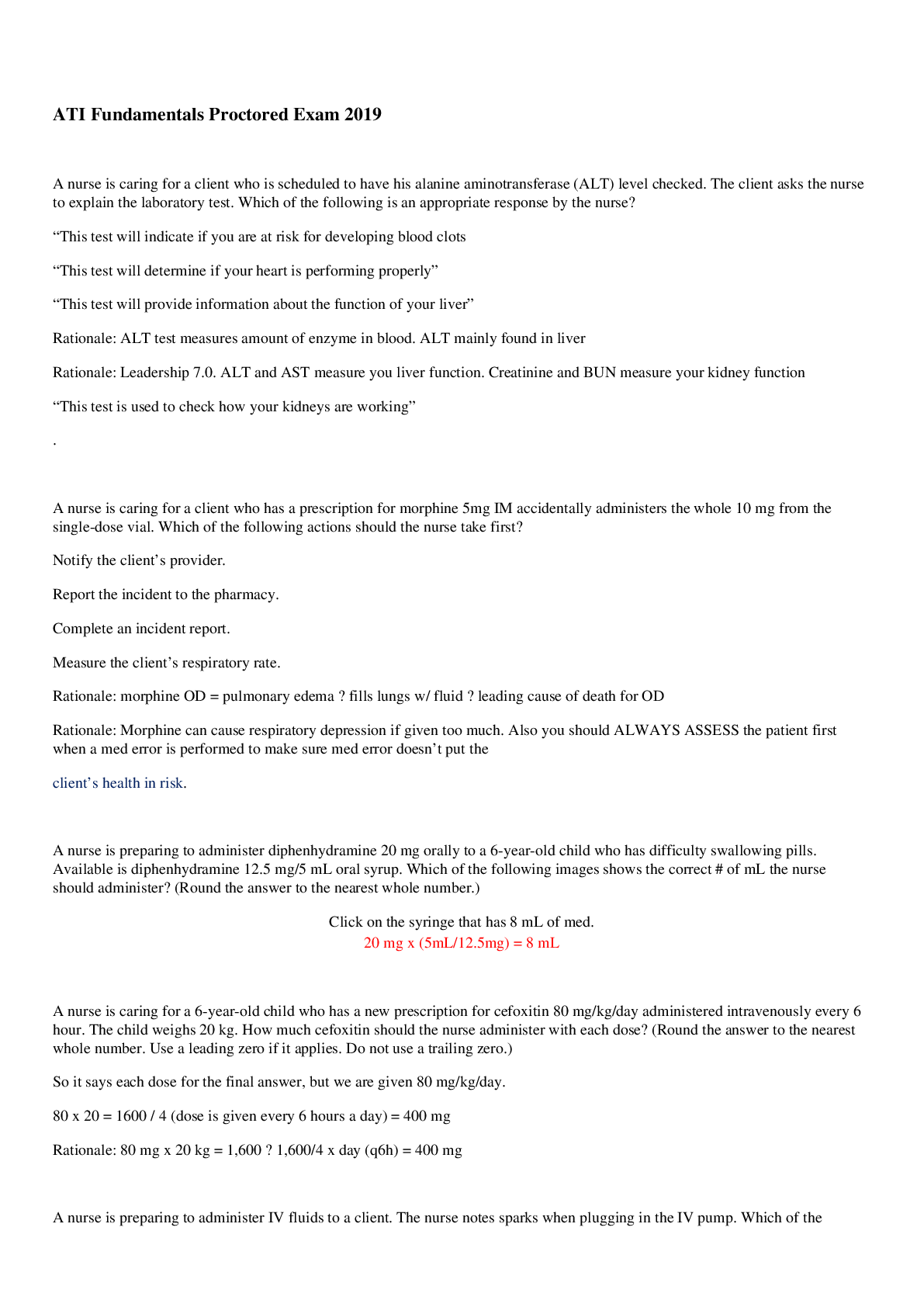*NURSING > QUESTIONS and ANSWERS > ATI Fundamentals Exam Answered |Latest 2019/2020 complete solutions. (All)
ATI Fundamentals Exam Answered |Latest 2019/2020 complete solutions.
Document Content and Description Below
ATI Fundamentals Exam Answered 1. MISSING 2. A nurse is caring for a client who is scheduled to have his alanine aminotransferase (ALT) level checked. The client asks the nurse to expl... ain the laboratory test. Which of the following is an appropriate response by the nurse? a. “This test will indicate if you are at risk for developing blood clots b. “This test will determine if your heart is performing properly” c. “This test will provide information about the function of your liver” d. “This test is used to check how your kidneys are working” Rationale: Leadership 7.0. ALT and AST measure your liver function. Creatinine and BUN measure your kidney function. 3. A nurse is caring for a client who has a prescription for morphine 5mg IM accidentally administers the whole 10 mg from the single-dose vial. Which of the following actions should the nurse take first? a. Notify the client’s provider. b. Report the incident to the pharmacy. c. Complete an incident report. d. Measure the client’s respiratory rate. Rationale: Morphine can cause respiratory depression if given too much. Also you should ALWAYS ASSESS the patient first when a med error is performed to make sure med error doesn’t put the client’s health in risk. 4. A nurse is preparing to administer diphenhydramine 20 mg orally to a 6-year-old child who has difficulty swallowing pills. Available is diphenhydramine 12.5 mg/5 mL oral syrup. Which of the following images shows the correct # of mL the nurse should administer? (Round the answer to the nearest whole number.) Click on the syringe that has 8 mL of med. 20 mg x (5mL/12.5mg) = 8 mL 5. A nurse is caring for a 6-year-old child who has a new prescription for cefoxitin 80 mg/kg/day administered intravenously every 6 hour. The child weighs 20 kg. How much cefoxitin should the nurse administer with each dose? (Round the answer to the nearest whole number. Use a leading zero if it applies. Do not use a trailing zero.) • So it says each dose for the final answer, but we are given 80 mg/kg/day. • 80 x 20 = 1600 / 4 (dose is given every 6 hours a day) = 400 mg 6. A nurse is preparing to administer IV fluids to a client. The nurse notes sparks when plugging in the IV pump. Which of the following actions should the nurse take first? a. Label the pump with a defective equipment sticker. b. Unplug the pump. c. Obtain a replacement pump. d. Notified the biomedical department to fix the pump. Rationale: Prioritization question. YOU WILL FIRST UNPLUG the IV pump to avoid causing a fire. 7. A nurse is caring for a client who has a surgical wound. Which of the following laboratory values places the client at risk for poor wound healing? Ch a. Serum albumin 3 g/dL b. Total lymphocyte count 2400 mm3 c. HCT 42% d. HGB 16g/dL Rationale: Albumin in low. Normal range is 3.5 to 5.5 g/dL. Low albumin places the client at risk for poor wound healing. The other lab values are within normal limits. 8. A nurse is preparing to check a client's blood pressure. Which of the following actions should the nurse take? Chapter 27 Vitals signs page 244 a. Apply the cuff above the clients antecubital fossa. b. Use a cuff with a width that is about 60% of the client's arm circumference.- width of the cuff should be 40 % of arm circumference c. How the clients sit with his arm resting above the level of his heart.- MUST BE AT HEART LEVEL d. Release the pressure on the client's arm 5 to 6 mm per second.- pressure release should not be more than 2 to 3 mm hg per second Rationale: ATI FUNDA says 40% of the arm circumference pg. 139. Release the pressure no faster than 2 to 3 mm Hg per second. Apply the BP cuff 2.5 cm (1 in) above the antecubital space with the brachial artery in line with the marking on the cuff. Apply the BP cuff 2.5 cm (1 in) above the antecubital space with the brachial artery in line with the marking on the cuff. 9. A nurse is preparing to perform nasal tracheal suctioning for a client. Which of the following is an appropriate action for the nurse to take? Chapter 53 Airway management page 563 a. Hold the suction catheter with the clean non-dominant hand. b. Apply suctioning for 20 to 30 seconds.- 10 -15 seconds is the maximum. c. Place the catheter in a location that is clean and dry for later use new line.- NEVER EVER REUSE THE SUCTION CATHETER . you throw it away after being used. d. Use surgical asepsis when performing the procedure. Rationale: ATI FUNDA. PG. 316 Use surgical asepsis for all types of suctioning. No longer than 10-15 seconds to avoid hypoxemia 10. A nurse is documenting client care. Which of the following abbreviations should the nurse use?ati book was not thorough so i had to go on different sites for charts - not confident with this, please double check. a. “SS” for sliding scale b. “BRP” for bathroom privileges c. “OJ” for orange juice- do not d. “SQ” for subcutaneous- do not [Show More]
Last updated: 1 year ago
Preview 1 out of 39 pages
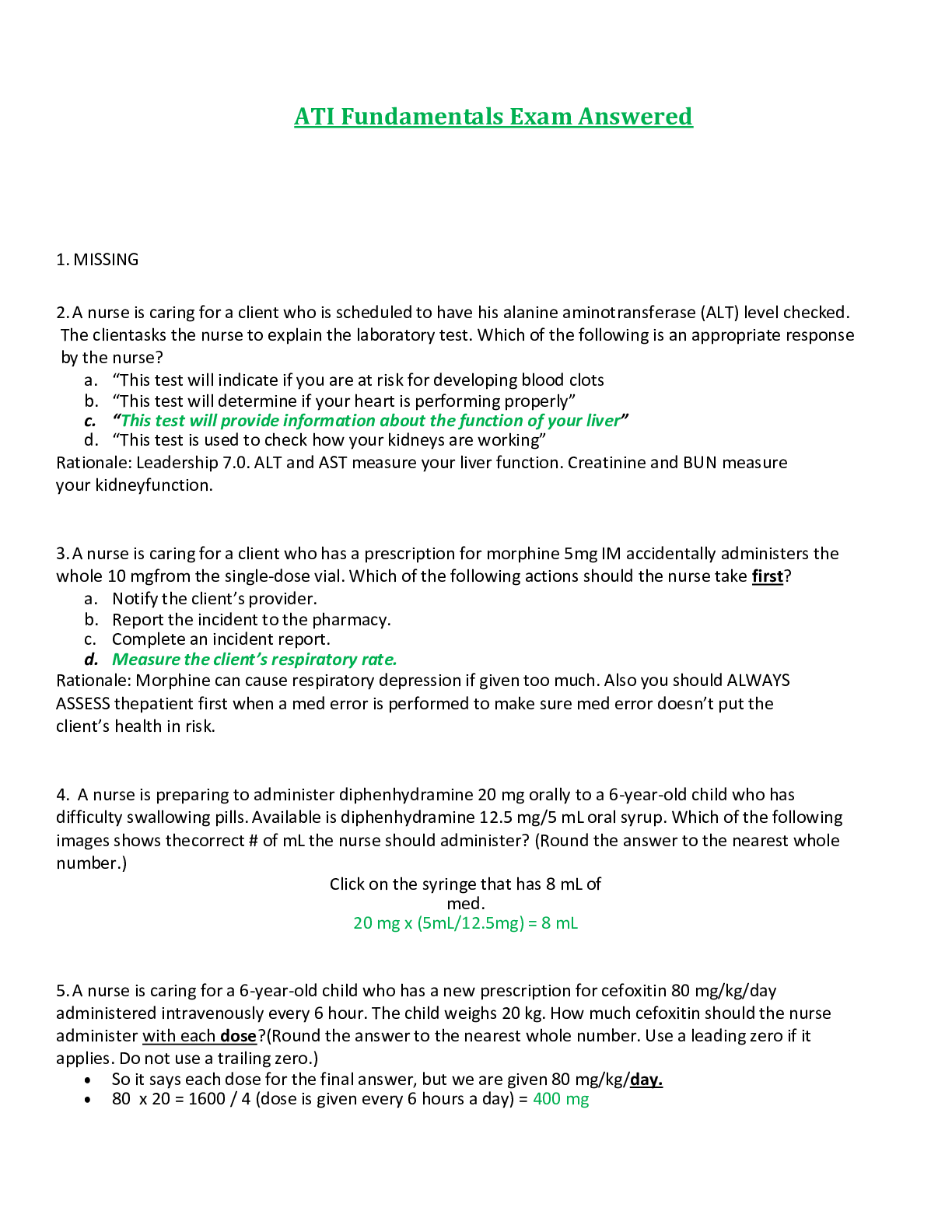
Reviews( 0 )
Document information
Connected school, study & course
About the document
Uploaded On
Mar 30, 2021
Number of pages
39
Written in
Additional information
This document has been written for:
Uploaded
Mar 30, 2021
Downloads
0
Views
60

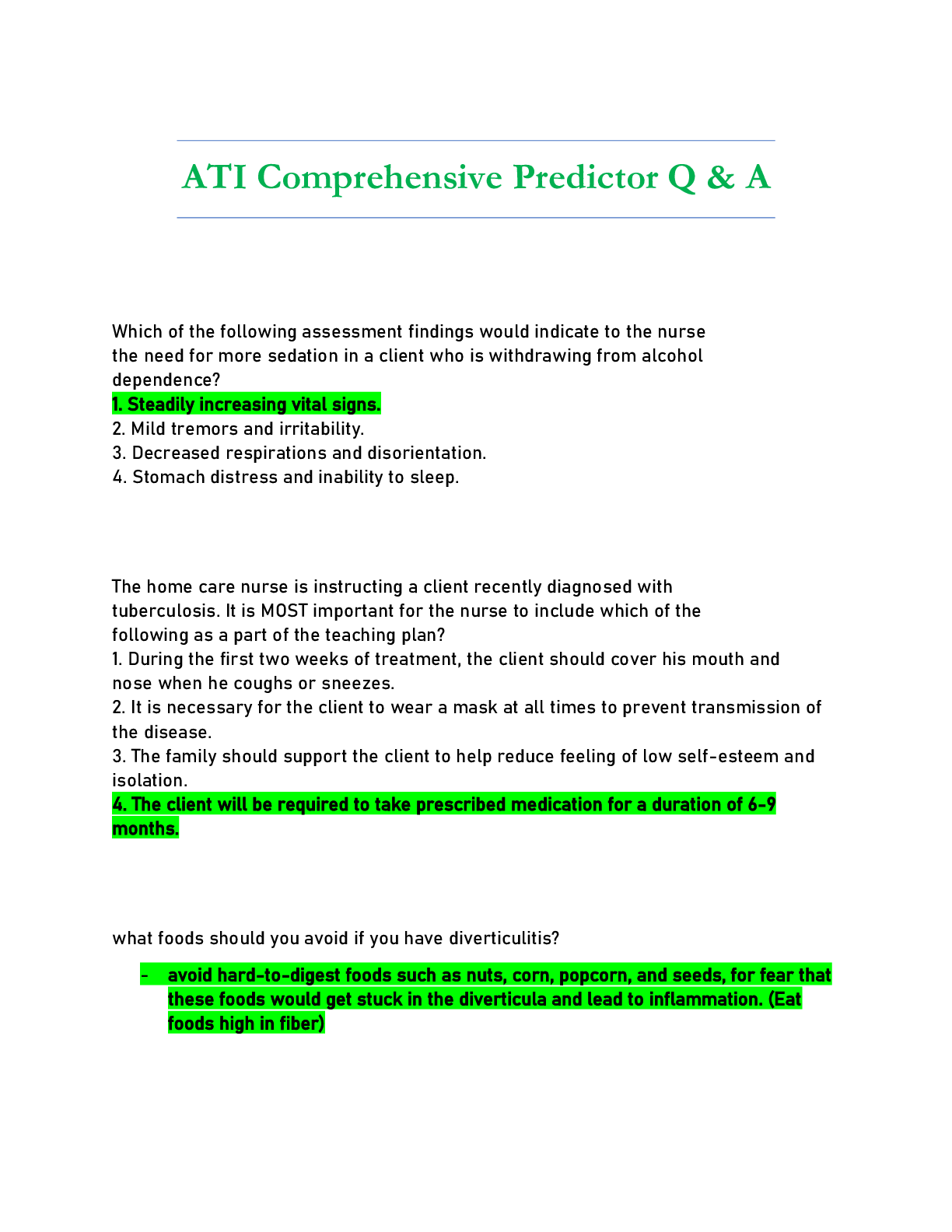
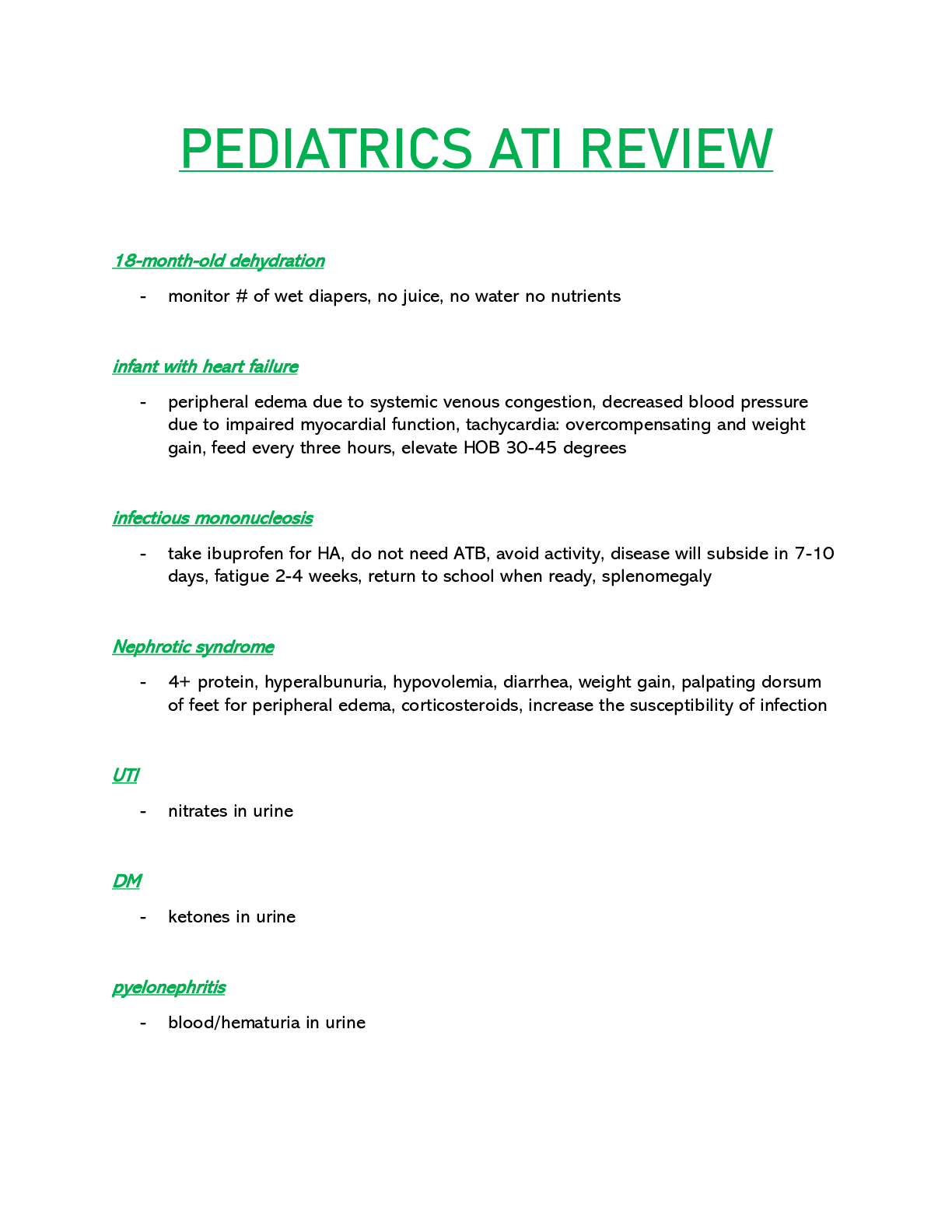
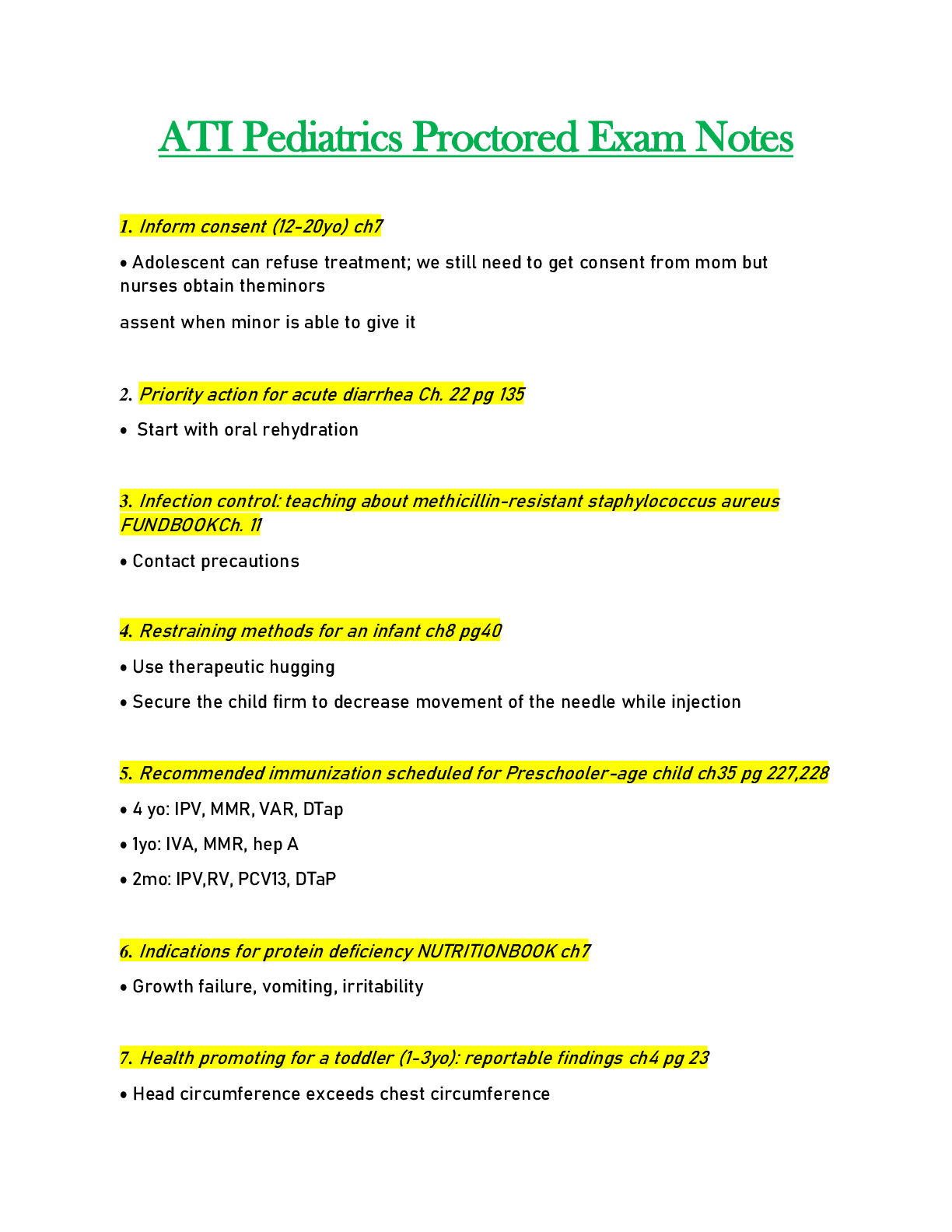
 MY21.png)
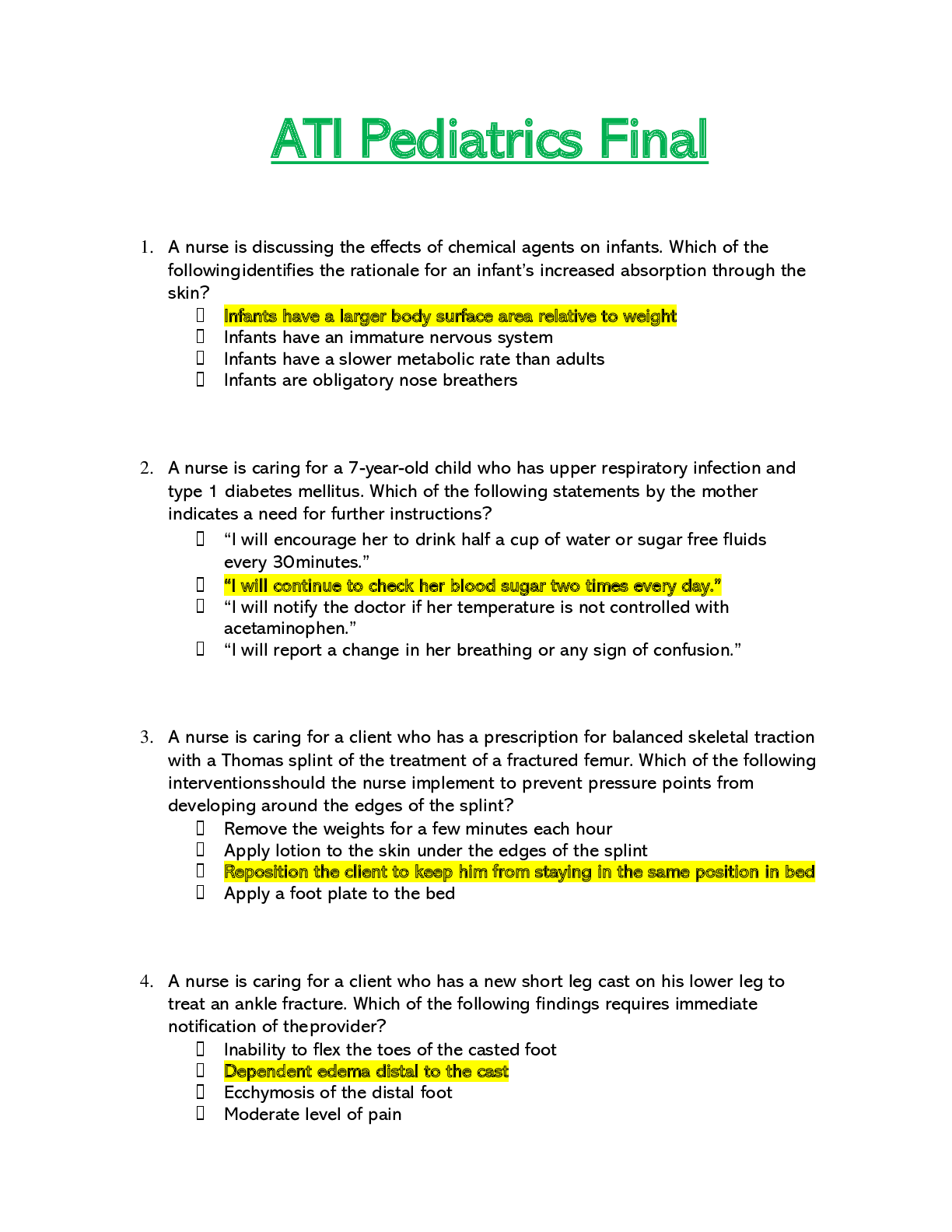
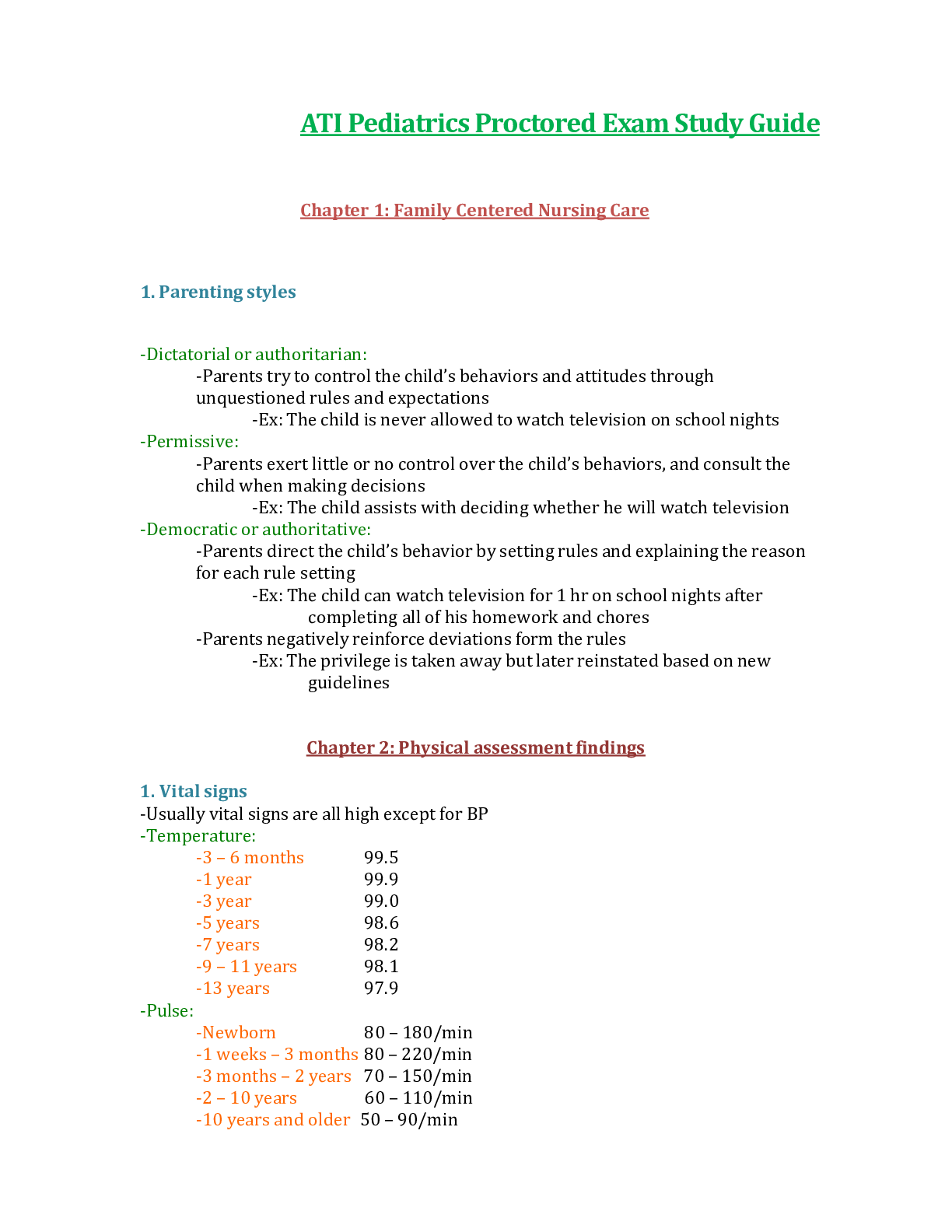
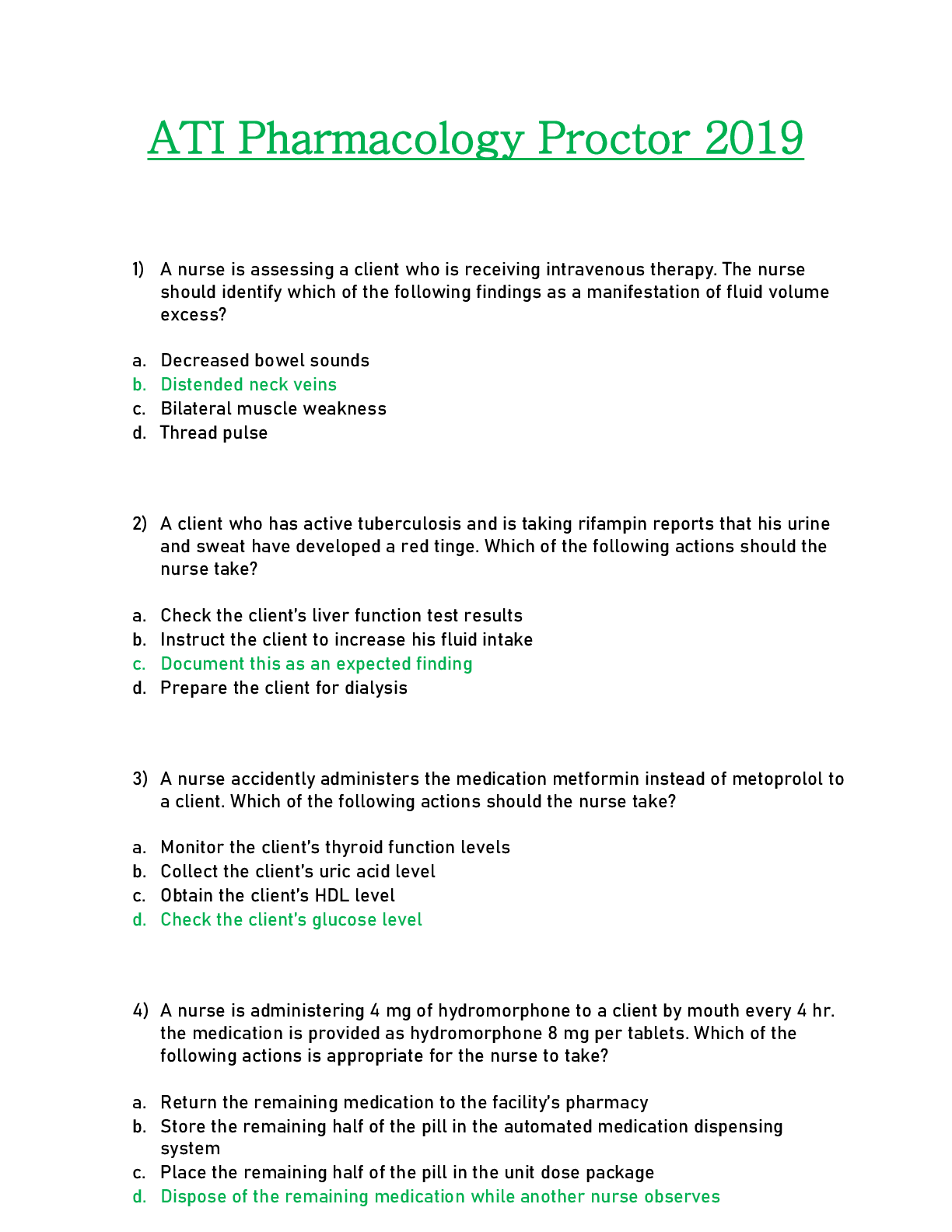

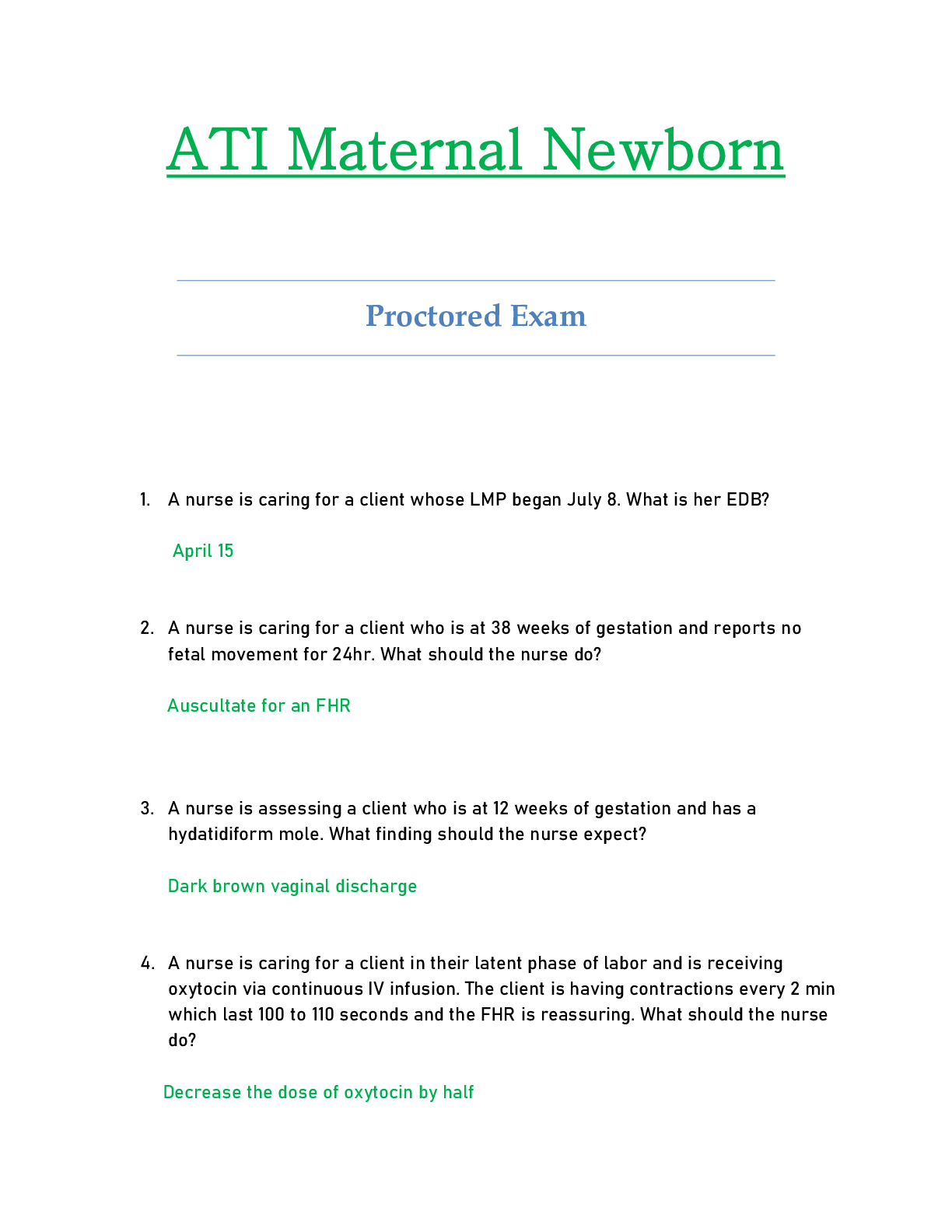
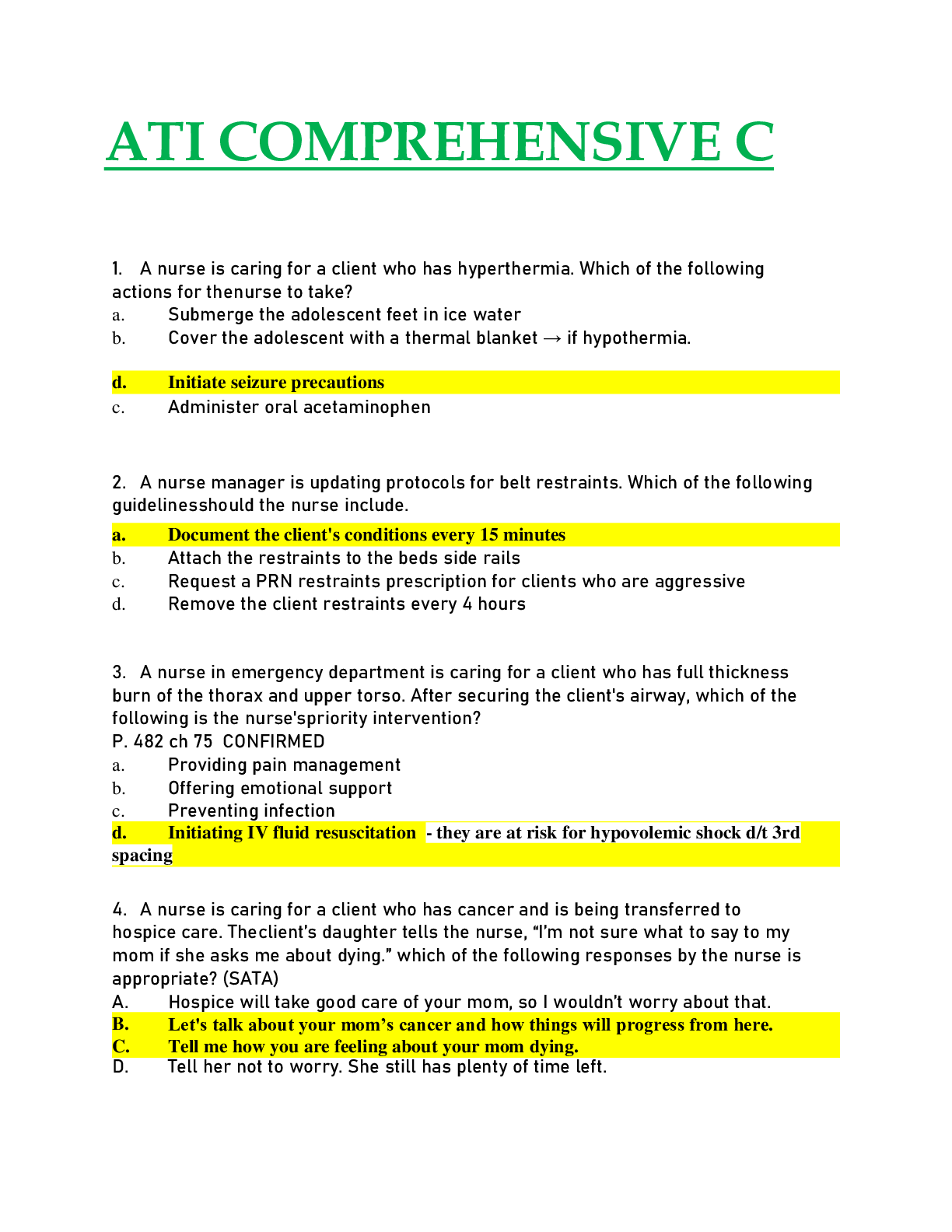
.png)
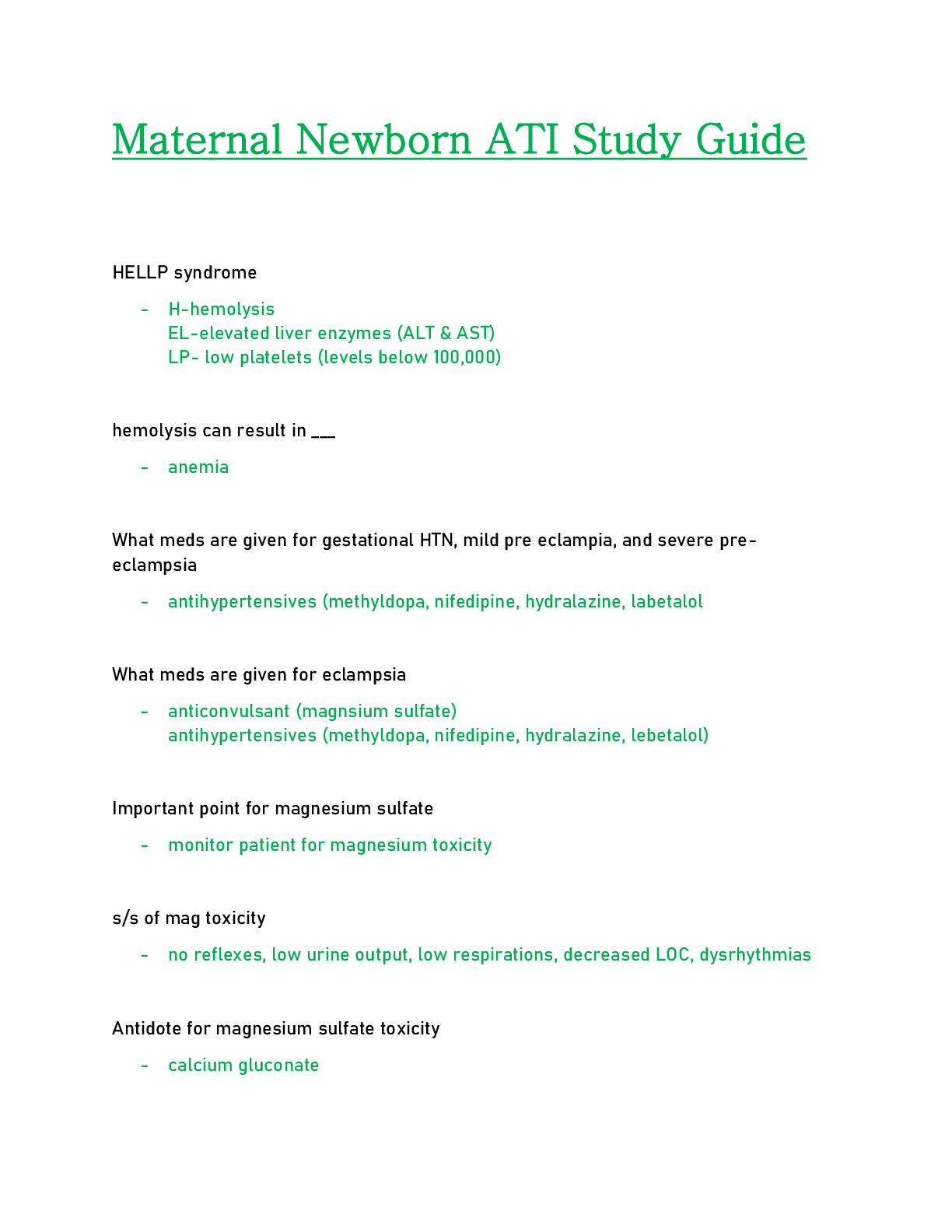


.png)
 A21.png)
